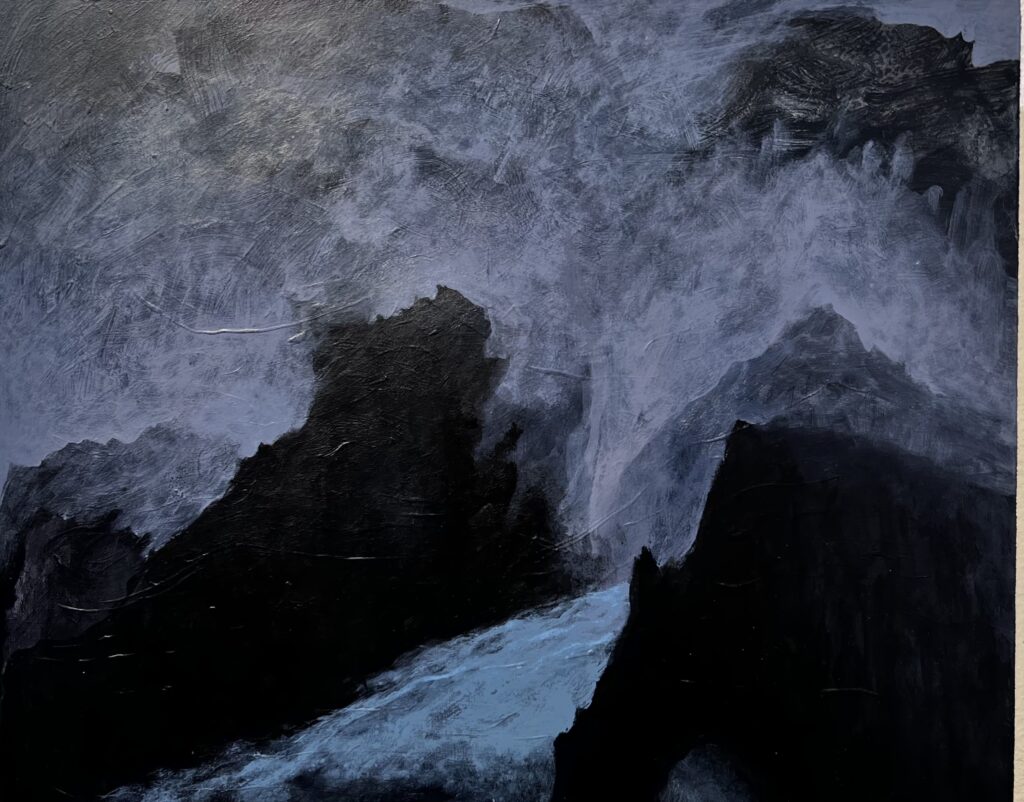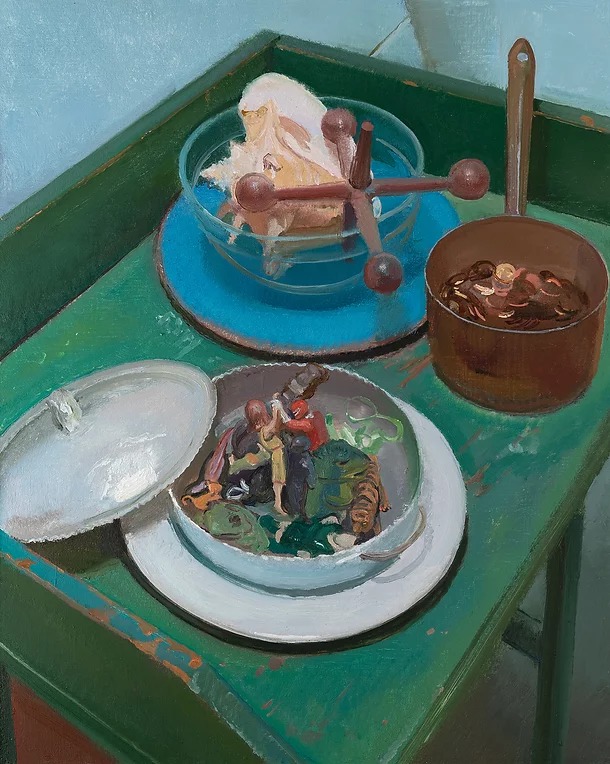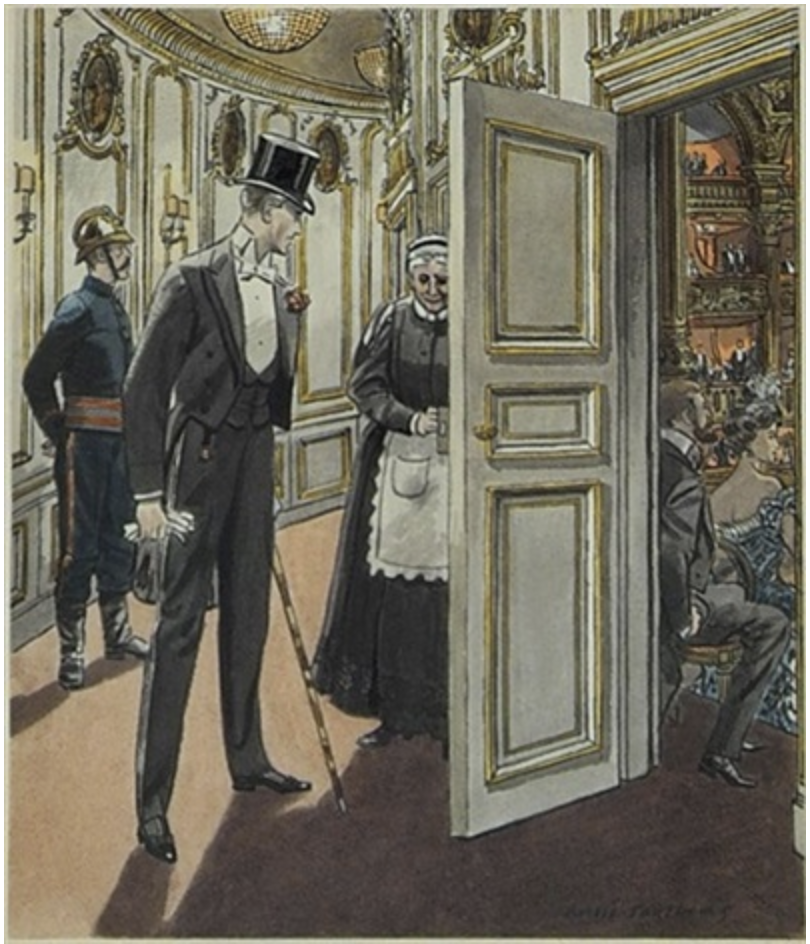December 21st, 2021 by dave dorsey

Where Did It Go?, Bradley Butler, 8″ x 10″, acrylic on panel
Bradley Butler’s recent solo exhibition at Williams-Insalaco Gallery 34 at Finger Lakes Community College was a quiet thrill. The work is quietly evocative, simple, deeply felt and as ontologically disorienting as a Beckett play. He took his title from Pet Sounds, Brian Wilson’s groundbreaking album: I just wasn’t made for these times. Many of his titles were equally candid in their unknowing vulnerability: I Don’t Know What I’m Doing Here and I Want to Believe in Something. His dark, mysterious landscapes—Turner meets Giorgione meets David Smith’s Hong Kong paintings—evoke a multitude of perceptions that hover just below the reach of the intellect. They are extremely simple in their execution. He uses black, white, thalo ted and thalo treen, and his brushwork remains mostly uniform across the canvas. He reduces his methods to the fewest possible choices and still comes up with a broad array of images that seem to straddle the border between one’s inner life and a twilight world of mountainous space, all of them looking consistently primordial. He seems not to want to assume to know more about existence than what prevailed before the first few words of the Book of Genesis. The way he gets so much variation out of such a paucity of tools reminds me of a guitar lesson I had in my teens when my instructor told me to riff for five minutes, without repeating myself, against a minor seventh blues chord progression by using only three notes. There were, to say the least, a lot of long, expressive pauses. Butler, in his relatively small canvases, creates a sense of vast reaches of an undiscovered world. It beckons and invites you to venture past a corner that juts into view, but also makes you hesitate, unsure what you are going to find. I posted one of his paintings on Instagram and simply quoted a passage from Lao Tzu as commentary:
Something mysteriously formed,
Born before heaven and earth.
In the silence and the void,
Standing alone and unchanging,
Ever present and in motion.
Perhaps it is the mother of ten thousand things.
I do not know its name.”
I disagree with Butler’s show title though. His work seems perfectly attuned to his times, being an example of an honest uncertainty and humility that would go a long way to being an antidote to the cloud of knowingness that cloaks how people communicate now. Anyone interested in seeing Butler’s work can find him most days doing a remarkable job of showing excellent art at his gallery, Main Street Arts in Clifton Springs, where a fascinating national juried show of small workswill be up until the Dec. 23rd.
December 19th, 2021 by dave dorsey

Scott Noel, Still Life with Pennies and Shell, 30″ x 24″ 2021
From Matt Klos at Exeter Gallery (241 S. Exeter St., Baltimore MD) a solo exhibition, “Still Life”, of Scott Noel’s recent paintings running through the end of the month. His remarks about color are on point. Noel’s paintings have a colorist’s skill with tone and hue. Once you recognize that little red action figure in the center of Still Life with Pennies and Shell, above, all the other colors in the painting are anchored and vivified by it:
Scott Noel has lived, painted, and taught in Philadelphia for most of his professional life. He has inspired generations of painters through his teaching at Pennsylvania Academy of Fine Arts (PAFA) since 1996. His subjects range broadly from figure, cityscape, domestic scenes and gardens near his home in Manayunk, studio interiors, and still life. His painting methods harken to traditional methods of American painting related to artists such as Thomas Eakins, Edwin Dickinson, and Charles Hawthorne although he creates color spaces that register as something contemporary, and perhaps, even indicative of an upbringing in the 60’s in Charlotte, NC.
This exhibition features ten oil on linen paintings, eight painted within the last year. Noel’s painting practice is unrelenting, and his output is abundant. His method of working “allover” in long, sometimes eight-hour sessions, is necessary since he’ll often scrape away his initial marks to serve as a platform for subsequent moves. In this way he keeps the image fresh and walks the line between delicate descriptions and unresolve. His mastery of painting is apparent yet there is nothing insincere or aloof about his work. He is seeking to understand what lays before him and seems to approach his latest works with a touch of naivety and all the joy he finds in his craft.
Scott Noel’s exhibition at Exeter is his first exhibition in Baltimore and coincides with his solo exhibition at Gross McCleaf Gallery in Philadelphia, Current Events, Provisional Painting. He was born in Charlotte, NC in 1955, educated at Washington University, St. Louis. Noel has written catalogue essays about forbears and peers that include Lennart Anderson, Larry Day and Ben Kamihira. His work is in numerous collections including The Woodmere Museum, Lasalle College Art Museum, The Pennsylvania Convention Center, and Drs. Don and Allison Innes.
December 1st, 2021 by dave dorsey

Chad, making his debut in the novel, coming into the balcony at the theater occupied by Strether. Illustration by Leslie Saalburg.
It might be fun and profitable for someone—if college students still read Henry James—to translate his late novels into English. I read The Ambassadors in graduate school, as required, and absorbed little of it. It was a compulsory title. The problem was that I wasn’t prepared to pay enough attention to actually locate subjects and verbs. It’s often a challenge in The Ambassadors. Over the past several years, as I’ve attempted to read or reread all of James’s novels, I’ve struggled to find the right adjectives to describe this late prose style: elliptical, disembodied, ethereal, circuitous, evasive, a sort of private murmur of abstracted assertions that seem to exhale the aura of his protagonist’s awareness rather than simply tell the reader what in the world is going on. Henry was offended when his brother, William, reacted to The Golden Bowl, the novel James published directly after The Ambassadors, by saying he admired its brilliancy but would have preferred an “absolute straightness of style” rather than “the method of interminable elaboration of suggestive reference.” William was being tactful: his observation more or less sums up how annoying these novels can be. And yet they are addictive once you succumb to the challenge of deciphering the prose. They tease you into submission. It can be amusingly, ridiculously frustrating to fish in the dark lake of this prose for what a given sentence signifies, especially when—fish in creel —you realize you could have netted one just as nourishing from inside an easily plumbed aquarium of the sort built by the earlier Henry James himself.
Lambert Strether is the central “ambassador” in the book. He has been sent to Europe by Mrs. Newsome to retrieve her son, Chad. She owns and runs a lucrative industry in Woollett, Massachusetts, and she wants him to lead it into the future. Ostensibly, Chad has been seduced by an immoral woman, maybe even a woman “of the streets.” Fears about this mysterious woman’s antecedents are groundless. She’s an aristocrat. Chad has been transformed into a genteel, poised, Parisian courtier by his association with Madame de Vionnet and her daughter, Jeanne. He has become a bit like Swann, from Remembrance of Things Past, twenty years ahead of Swann’s emergence in Proust’s novel. Strether must convince Chad to come home because his mother wants him, effectively, to run the company with a focus on the new world of advertising—a force that, it’s surprising to learn from this novel published at the turn of the 20th century, was already fueling commerce.
From the moment he arrives in Europe, Strether falls in love with his surroundings, and finds himself—in his own version of a mid-life crisis, in his fifties—falling, not for the first woman he meets (who falls in love with him, as it happens) but for Europe and, especially Paris itself. When he meets his quarry, Chad Newsome, he recognizes that Chad has matured and come into focus as an accomplished social creature in ways Strether never would have guessed were possible from his acquaintance with the boy while he was growing up. Strether’s imagination opens to Paris, the magnificence and subtle elegance of the shops and houses, the left and right banks of the Seine, the Faubourg St. Germaine, the parks and the museums, the restaurants, the hotels, and the everyday sounds that rise from the streets. The world has been renewed before his eyes. His impulse is to wander and absorb everything he sees, smells, hears and touches. He’s reborn. Through this febrile, almost manic hunger for the city and the region, he’s only half-aware of how the seemingly innocent seductions of a beautiful place color his perception of the relationship between Chad and this lovely, charismatic and slightly older woman. Marie de Vionnet is a countess, highly intelligent, sensitive, humble, the model of noblesse oblige. All of Strether’s actions arise from his desperate faith that her relationship with Chad is virtuous, chaste, a model of Platonic devotion and friendship. She is married but estranged from her husband and Chad’s family suspects adultery, hence the need for Strether to bring the son home. Yet, from the beginning, Strether is charmed by both Chad and the countess and immediately begins to resist his mission, the call of Woollett. His motives for temporizing are a complex mix of selfishness and generosity—he wants to dwell in Paris as long as possible to absorb its glory. This requires Chad to be morally pure. If Chad’s love for this woman and her daughter were base, it would break the spell of Paris itself, destroy the aura of nobility. It would be the serpent and apple in this garden. The garden itself would cease to charm. This would obligate him to bring Chad home by any means possible, ending the entire European idyll. His actions throughout most of the book are based on Strether’s desire for this new, improved Chad to MORE


